Keystone species Their role in combating climate change
Zoologist Mhairi Duncan explores how various animal species contribute to the health of their ecosystem and discusses how some of these species limit climate change
EXAM LINKS
AQA Nutrient cycles; Populations in ecosystems
OCR A Recycling within ecosystems; Populations and sustainability
OCR B The importance of microorganisms in maintaining ecosystems; The impact of population increase
Pearson Edexcel A Conservation of endangered species; The effects of climate change; The role of microorganisms in the decomposition of organic matter
Pearson Edexcel B The significance of microorganisms in the recycling of nutrients; Human effects on ecosystems
WJEC Eduqas Population size and ecosystems; Human impact on the environment
An ecosystem is a community of organisms occupying a specific environmental area. Every plant, animal and microbe occupies a niche within an ecosystem. The niche describes how the organism interacts with its environment, including the range of environmental resources it uses throughout its lifetime. Simply by occupying a niche, organisms have an influence on the composition and structure of their ecosystem. This often results in species that inhabit the same environment having different niches and therefore avoiding competition over a shared resource.
Natural selection has produced organisms that suit their niche, meaning that their anatomy, behaviour and lifestyle are well adapted to take advantage of the resources available to them. When a population occupies all the available niches in an ecosystem, the ecosystem is described as having reached its carrying capacity, limiting any further growth.
Climate change, ecosystems and keystone species
Climate change is an environmental disturbance faced by ecosystems across the world. As greenhouse gases accumulate in the atmosphere and the oceans, the global temperature rises and the Earth’s climate regulatory systems weaken, increasing the occurrence of extreme weather events such as floods and droughts. This poses a threat to species survival and tests the resilience of ecosystems to recover from future disturbances.
Ecosystems function by capturing, storing and transferring energy, e.g. from the sun, into organic material. Interactions between species and their environment contribute towards the movement of energy and, ultimately, the success of the ecosystem. If, within an ecosystem, the population of an organism is large, it is likely to have a greater consequence for the function of that ecosystem. However, some species contribute more towards the success of an ecosystem despite being less abundant. Such organisms are known as keystone species, and many play a key role in combating climate change.
Beavers
Beavers are rodents that inhabit wetlands across Europe, North America and Northern Asia. Like other rodents, beavers have strong, iron-rich incisors which they use to chisel through trees. Their webbed feet and paddle-like tail help them navigate this semi-aquatic environment. Beaver offspring have an instinctive tree-felling behaviour. However, it is through teaching by their parents that they learn to build their characteristic dams and lodges. It is their dam-building ability that leads us to label them ‘ecosystem engineers’ as they transform woodlands into wetlands by altering nearby water courses. These engineered wetlands, known as beaver meadows, boost biodiversity by creating new niches for other species to occupy.
The low water velocity associated with beaver meadows acts as a water filtration system, removing pollutants and improving water quality. Beaver meadows also play an important role in slowing down climate change. The high water table caused by beaver dams slows the rate of decomposition in the underlying soil, storing carbon within organic material for longer and keeping it safely out of the atmosphere.
Persecution of beavers by humans in the past has transformed many beaver meadows into dry grasslands, releasing carbon dioxide into the atmosphere and increasing the susceptibility of the environment to droughts and wildfires. Recognition of their significant influence on the ecosystem has sparked several reintroduction programmes, restoring previously extinct populations in the UK to over 400 individuals in just over a decade (see BIOLOGICAL SCIENCES REVIEW, Vol. 33, No. 4, pp. 6–9). For their role in boosting biodiversity, water filtration, and nutrient recycling, there is no doubt of this ecosystem engineer’s place among the keystone species.
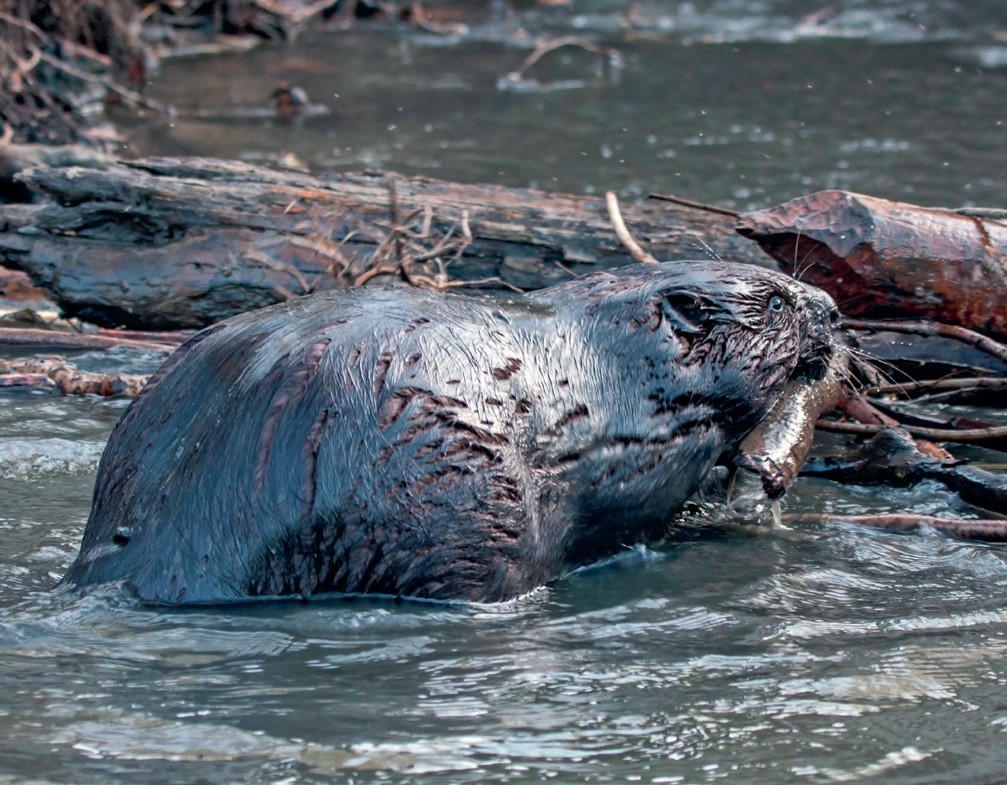
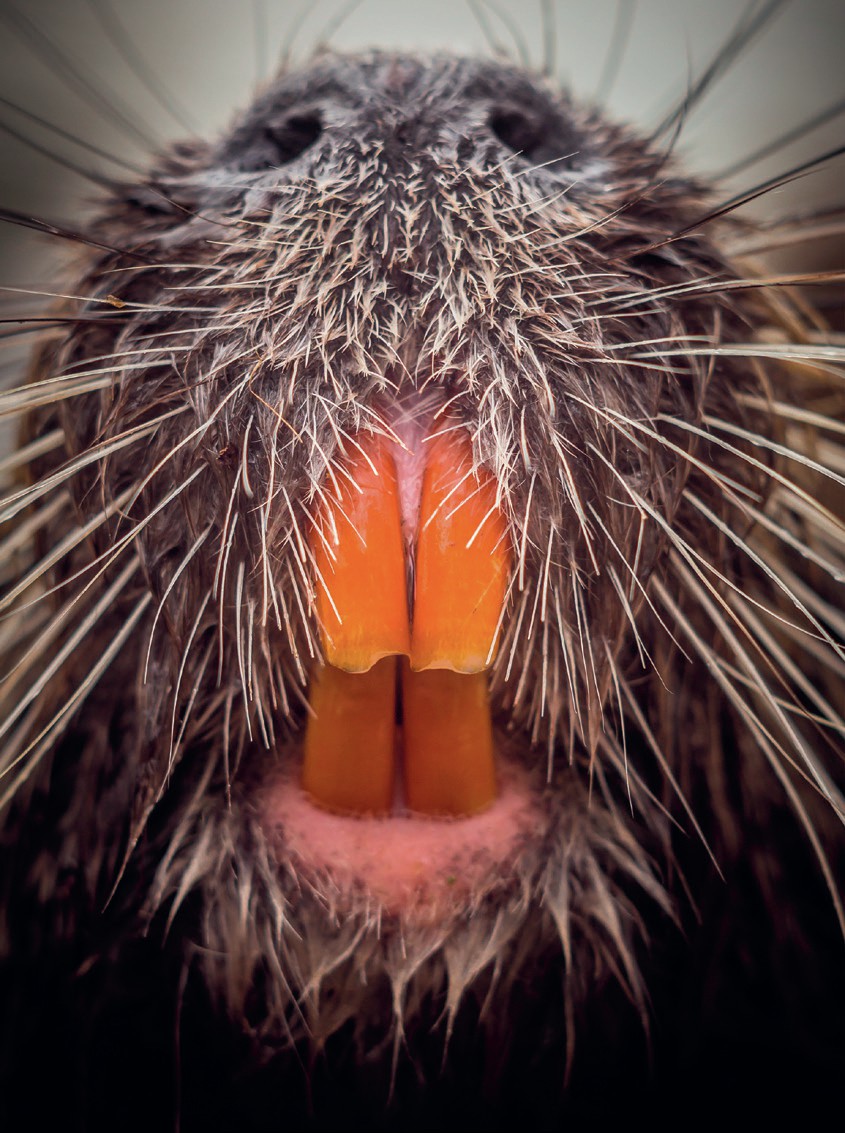
Sea otters
Sea otters are members of the weasel family. They inhabit coastal regions of the eastern North Pacific Ocean. Their webbed paws and dense fur make them highly adapted to suit their aquatic niche. Key to the sea otter’s contribution to their ecosystem are kelp forests. Kelp are algae that grow in cool, nutrient-rich, environments and form large forests which capture carbon dioxide from the atmosphere. Sea urchins are kelp grazers, and their spiny exterior makes them unpalatable to many predators, allowing them to dominate coastal ecosystems and destroy valuable kelp forests.
The loss of kelp forests not only eliminates an important niche for many species, but also releases a substantial mass of carbon dioxide into the atmosphere, contributing to climate change and ocean warming. Sea otters are given their keystone status as they are specialist predators of sea urchins. They skilfully break into sea urchins from the less spiny underside using their sharp claws and teeth, then extract the nutritious meal using their tongue. Without sea otters acting as ‘kelp guardians’ the effects of climate change and ocean warming would be exaggerated, as kelp forests would soon be replaced by fields of sea urchins.
Sea otters were intensively hunted during the fur trade of the last two centuries. Since becoming a protected species, their numbers have steadily increased, with southern Californian populations previously thought to be extinct now exceeding 3000 individuals. But marine pollution and harmful fishing practices continue to threaten sea otter populations, making them an endangered species.
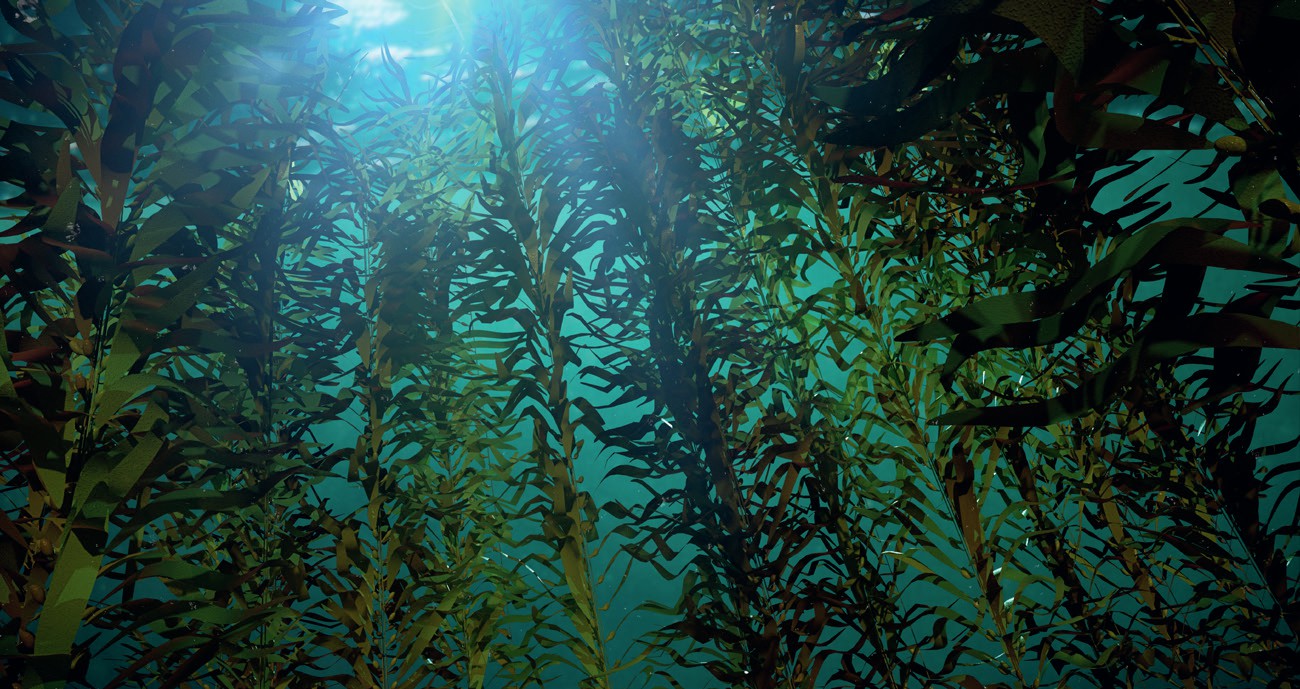
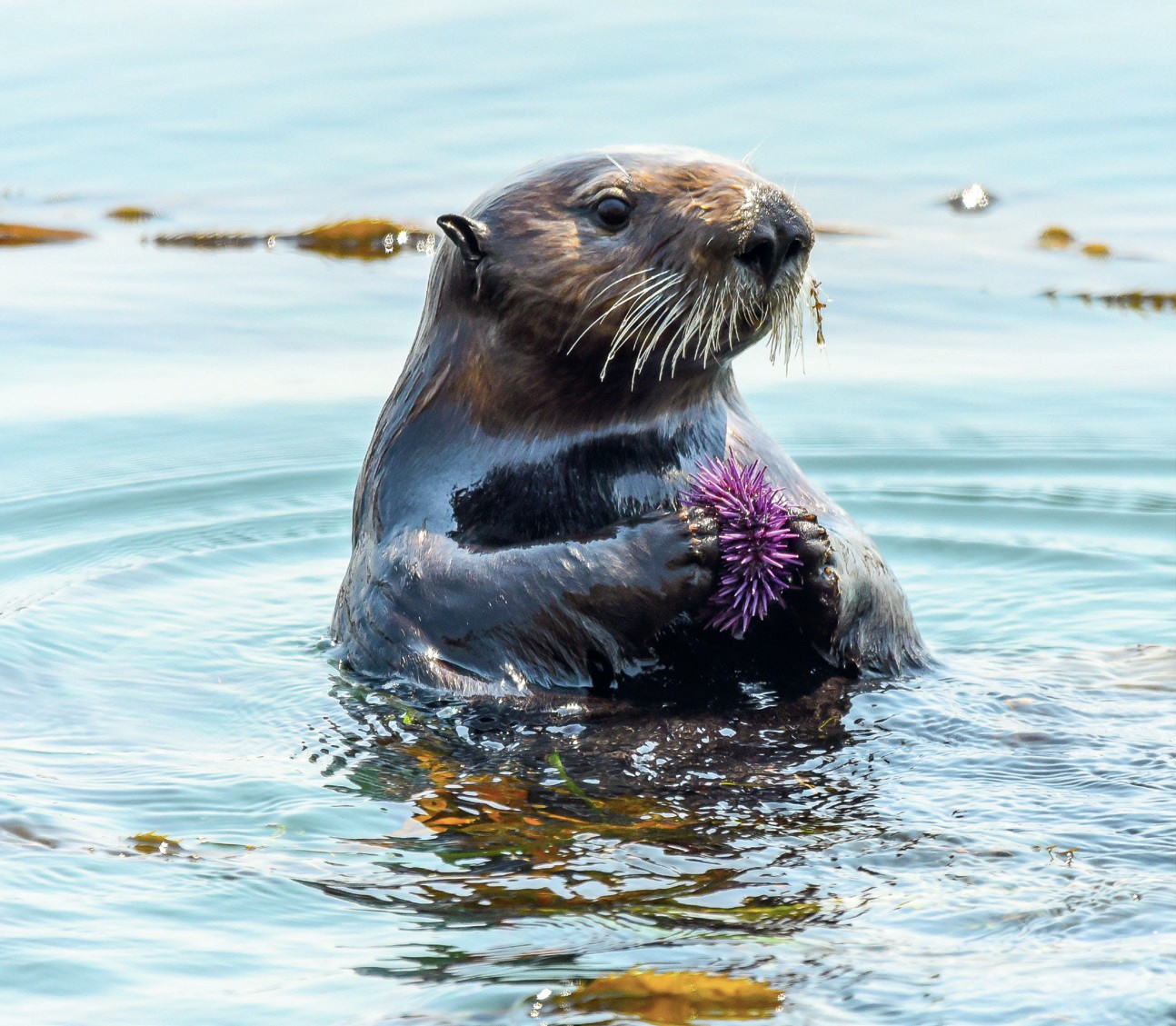
Lemurs
Lemurs are members of the primate family found exclusively in Madagascar. Lemurs feed mainly on fruits growing in tall canopy trees which produce fruits too large to be consumed by most other animals. When lemurs eat fruit, the seeds pass through the lemurs’ digestive system and are delivered to the forest floor in the lemur scat, where they germinate and grow into trees (see Box 1).
Box 1 Lemur-mediated seed dispersal
In 2020, researchers from Madagascar, the USA and Canada investigated the effectiveness of lemur dispersal on seed growth by comparing the growth rate of lemur-defecated seeds and self-dispersed seeds. They humanely trapped more than 300 individual brown mouse lemurs (Microcebus rufus) over the 17-month experimental period. The researchers then carefully examined the lemurs’ scat, extracting seeds that were later identified and matched to the corresponding tree species. Seeds from the same tree species were then extracted directly from the fruits, referred to as control seeds. The lemur-defecated seeds and control seeds were sown under identical conditions and the germination and growth rate was recorded. The findings showed that lemur-defecated seeds germinated more quickly and grew faster than the control seeds (see Figure 1.1), highlighting the effectiveness of lemur defecation as a mechanism of seed dispersal and forest regeneration.
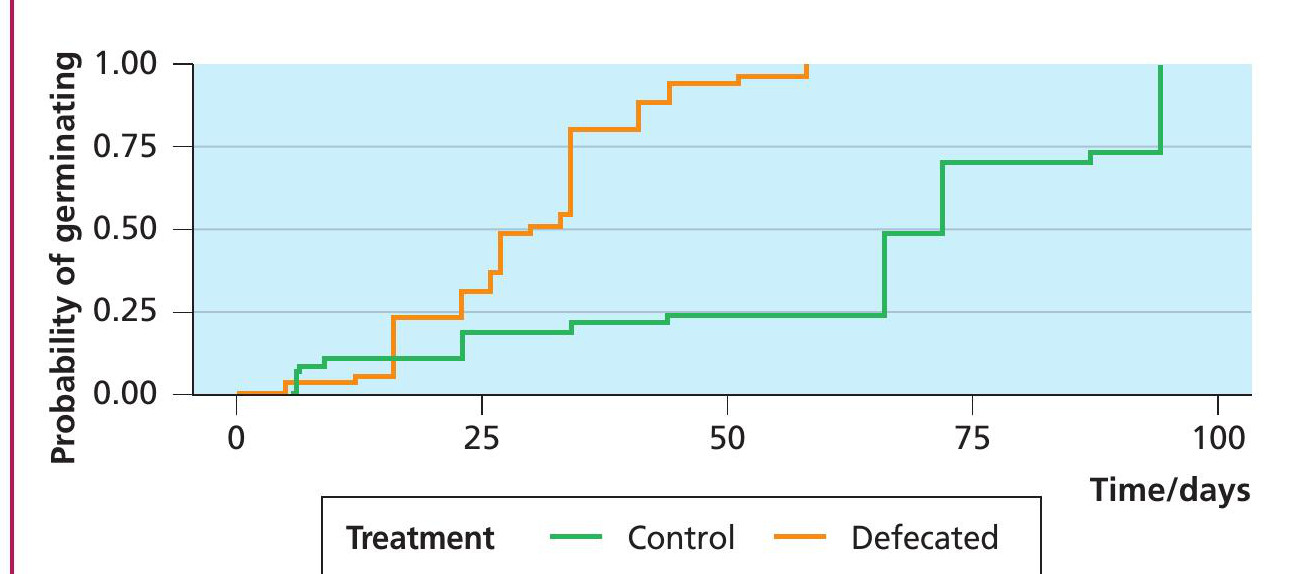
The muscular hind limbs of lemurs allow them to leap throughout the dense rainforest, spreading seeds across several hundreds of metres. Tall canopy trees provide niches to hundreds of organisms and are estimated to store between 100 and 250 tonnes of carbon, making them vital in resisting climate change. The dependency of fruit trees on lemurs for their seed dispersal is what gives lemurs their keystone status.
Unfortunately, virtually all the approximately 100 lemur species existing in Madagascar are threatened by habitat loss, illegal trafficking and climate change. The loss of lemurs would drastically alter the composition of the rainforest ecosystem, threatening the survival of hundreds of species and an important carbon store. Conservation initiatives include the formation of nature reserves where lemurs can exist free from hunting, and captive breeding programmes in zoos working to preserve viable lemur populations.
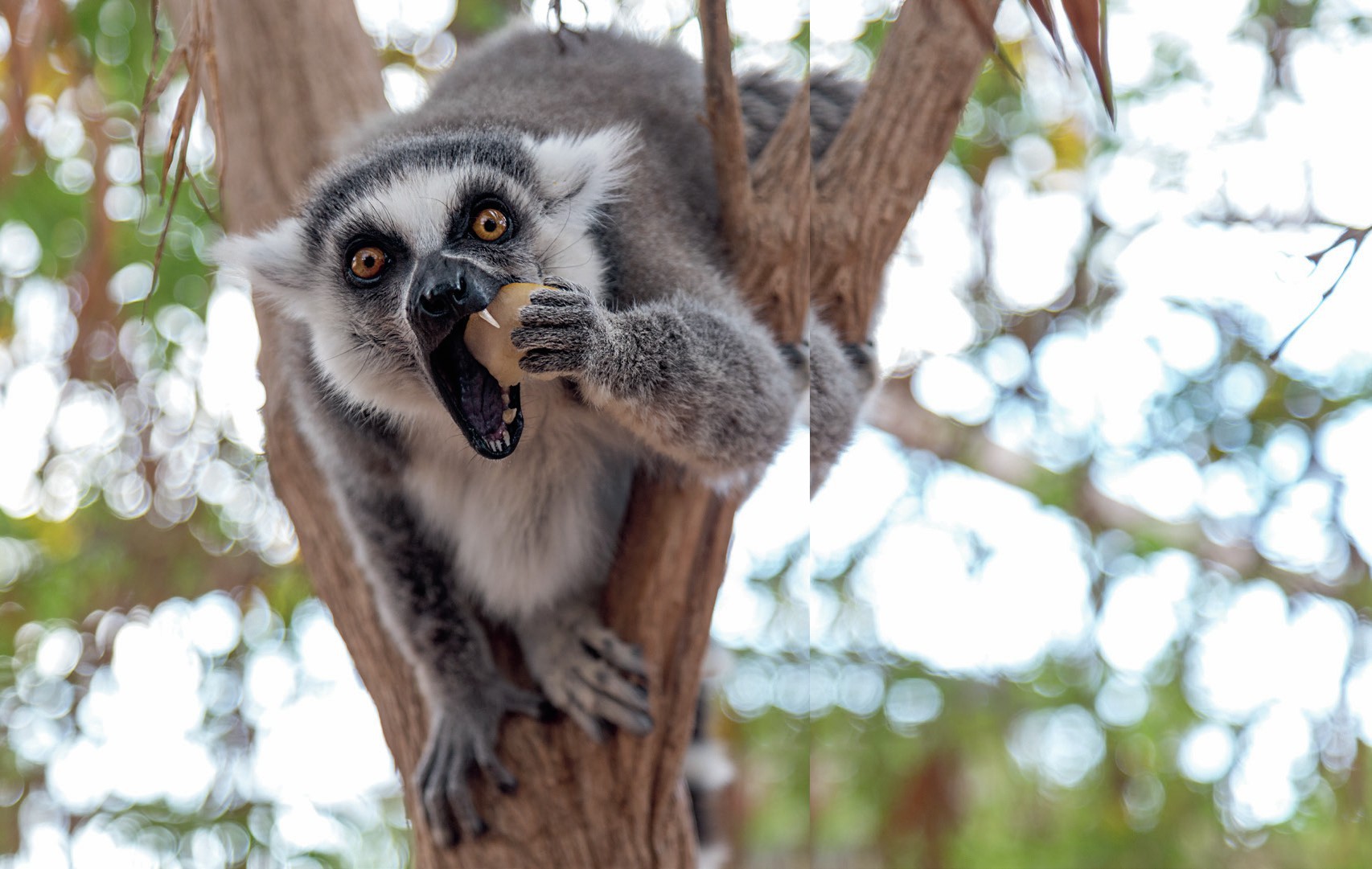
Parrotfish
Parrotfish are a subgroup of the wrasses, known for their brightly coloured bodies. They consist of around 90 species, typically inhabiting tropical coral reefs. Like sea otters, parrotfish have keystone status in light of their role in protecting valuable habitats – i.e. coral reefs.
Coral reefs store vast amounts of carbon within the skeletons secreted by generations of tiny, anchored animals known as polyps. Most corals are dependent on plenty of light and space to survive and grow. However, macroalgae (seaweeds) also occupy a similar niche, resulting in competition with coral over light and space. Due to the fast growth rate of most macroalgae, they can quickly outcompete coral, depriving corals of the vital requirements they need to survive.
Parrotfish morphology and feeding behaviour suit their diet, specifically targeting macroalgae growing on rocky substrata. Their teeth form a distinctive beak-like jaw, equipping them to bite and grind macroalgae attached to the corals, ridding coral of its competitor. In addition to storing carbon, coral reefs host more biodiversity per unit area than any other environment and are valuable economic resources for coastal communities. However, a decline in parrotfish populations due to overfishing is triggering a rise in coral degradation as macroalgae outcompete coral for vital nutrients. By simply occupying its niche, the parrotfish plays a crucial role in maintaining one of Earth’s most ecologically and economically valuable ecosystems and carbon stores, making it more than deserving of the keystone title.
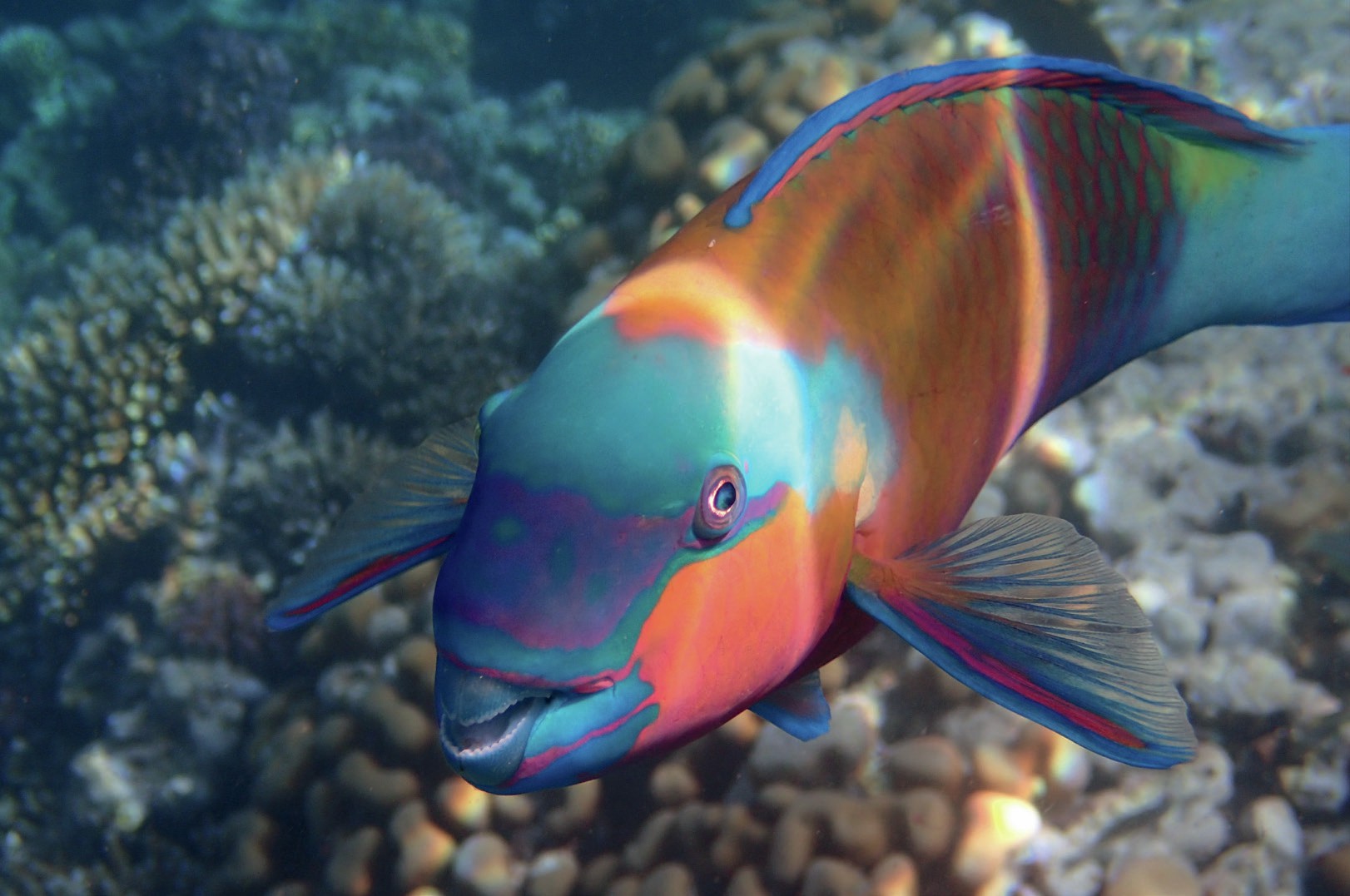
Consider this
Many species have a crucial impact on their ecosystem. Preserving as many species as possible ensures ecosystems can recover from significant challenges such as climate change. However, some animals contribute significantly more towards the health of their ecosystem, and even play a part in combating climate change. Do these keystone species deserve extra protection? This is a question with no easy answer. One thing we know about ecosystems is they are highly interconnected. Every organism interacts with another in some way and to protect one organism requires protecting the range of environmental resources they rely on to survive.
Acknowledging the interconnectedness between organisms within an ecosystem is a great way to connect with nature. Next time you are in a natural environment, look for some animals and ask yourself these questions:
■ What niche might this animal occupy?
■ What other organisms might interact with this animal?
■ What might this animal’s ecological role be?
TERMS EXPLAINED
Biodiversity The variety of living organisms.
Decomposition The breakdown of organic material.
Instinctive A behaviour that does not need to be learned.
Population A collection of organisms of the same species within an area at a given time.
Species A group of similar living organisms that can successfully interbreed.
PRACTICE EXAM QUESTIONS
1 Complete the following passage by inserting the correct ecological term in each space.
A group of organisms of the same species living together in a single environment form a _________________. Within this environment, abiotic and biotic factors restrict the members of a species to a discrete _________________.
All the species living together in a single environment form a _________________ , which, together with the abiotic factors constitute an _________________. [3 marks]
2 ‘The high water table caused by beaver dams slows the rate of decomposition in the underlying soil’ (see p. 31).
Explain why the high water table causes this to happen. [3 marks]
BiologicalSciencesReviewExtras
Go online for the answers at www.hoddereducation.co.uk/bioreviewextras
RESOURCES
‘What role do beavers play in climate change?’,
Science: https://tinyurl.com/3f79xm66
‘Sea otters maintain remnants of healthy kelp forest amid sea urchin barrens’, ScienceDaily: https://tinyurl.com/tmcejpha
‘Loss of lemurs might endanger many of Madagascar’s largest tree species’, ScienceDaily: https://tinyurl.com/4km8mwm4
‘Parrotfish are critical to coral reef health, study finds’,
ScienceDaily: https://tinyurl.com/ebvj8tpy
‘Our world our impact: animals with jobs’ (author’s video): https://youtube.com/watch?v=8K3d81k6Wb0
KEY POINTS
■ Ecosystems are made up of many different species interacting with each other and their environment.
■ Animals occupy a niche which determines their role within the ecosystem.
■ Climate change is threatening species survival and ecosystem resilience.
■ Keystone species contribute significantly towards the success of their ecosystem and mitigating the effects of climate change.





